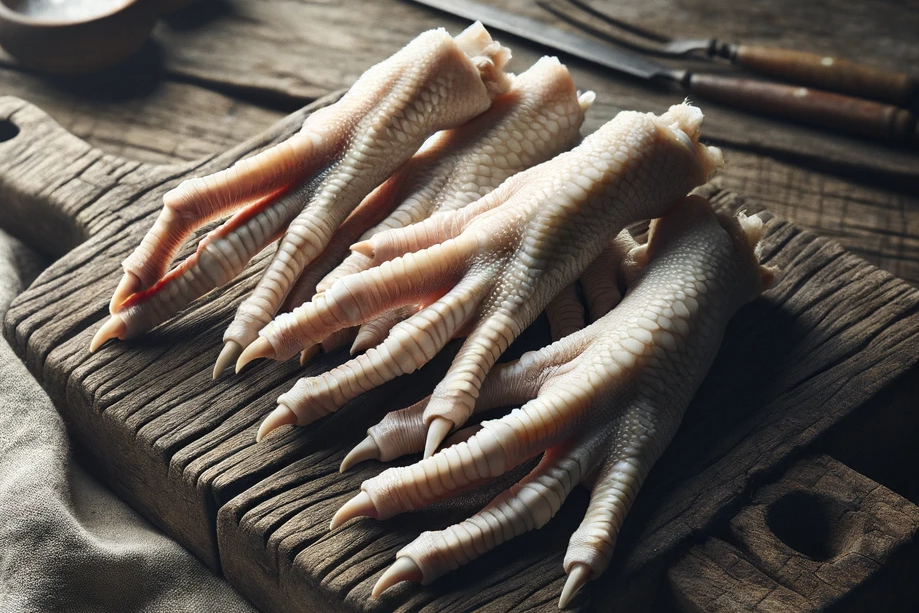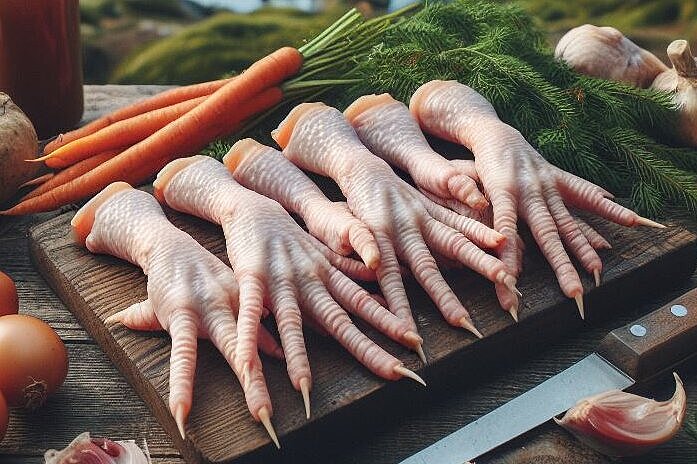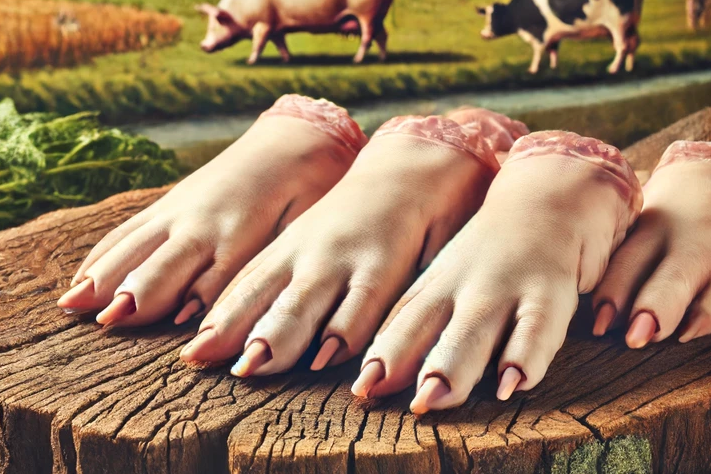Calf's feet

In the world of dog snacks and supplements, there are a variety of options ranging from simple chews to complex supplements. One particular delicacy that is often overlooked is calf's feet. These can be a source of valuable nutrients, but also carry potential risks. In this article, we explore the nature of calf's feet as a supplement to dogs' diets, discuss their benefits and potential drawbacks, and provide a well-rounded perspective on their use.
What are calves' feet?
Calves' feet, as the name suggests, are the lower extremities of calves. Often used in the human diet for their gelatin, which is extracted by slow cooking, they also offer interesting nutritional benefits for dogs. Rich in protein, fat and especially collagen, they can be a healthy snack for dogs if prepared correctly.
Benefits of calf's feet for dogs
Rich in collagen
The collagen found in calf's feet supports healthy skin and coat, promotes strong bones and supports joint function. This can be particularly beneficial for older dogs or breeds known to be prone to joint problems.
Dental hygiene
Chewing on hard materials such as calf's feet can help clean teeth, reduce plaque build-up and therefore contribute to a dog's overall oral health.
Natural source of minerals
In addition to collagen, calf's feet also contain important minerals such as calcium and phosphorus, which are essential for bone health.
Disadvantages and risks
Choking hazard
Large pieces of calf's feet can pose a choking hazard, especially for smaller dogs or those who tend to gobble their food without chewing thoroughly.
Risk of injury
Sharp edges that can occur when chewing bones pose a risk of injury to the mouth or, in the worst case, internal injury if splinters are swallowed.
Digestive problems
Not all dogs tolerate the rich composition of calf's feet well, which can lead to gastrointestinal problems. The high fat content in particular can lead to pancreatitis in sensitive dogs or if eaten in excess.
Quality and origin
The safety of calf's feet depends heavily on their quality and origin. Improperly processed or contaminated products can be harmful to health.
A treat with care
Calf's feet, in moderation and under supervision, can be a nutritious addition to your dog's diet. The benefits, such as supporting joint health and promoting dental hygiene, make them an option worth considering for many dog owners. However, it is crucial to recognize the risks and take steps to minimize them. This includes selecting high quality products, preparing them correctly and monitoring the dog when eating them to ensure that no parts are swallowed that could cause internal blockages or injury. As with any treat or supplement, it's important to consider your dog's individual tolerance and needs. With the right preparation and care, calf's feet can be an enriching and healthy addition to your dog's diet.
If you notice any signs of hypersensitivity or poisoning in your dog, you should see your vet immediately. We are not a substitute for a vet, but we try to be as accurate as possible. Every dog reacts differently and we recommend you get a second opinion or consult your vet if in doubt.
Stay healthy and take good care of your four-legged friend!😊
Similar to Calf's feet
Duck feet are the feet of ducks that are a by-product of slaughtering. They consist of skin, cartilage, bones and nails. The bones are soft and do not splinter, so they can be easily digested by...
Goose feet, in the context of dog nutrition, are dried or sometimes fresh goose feet that are processed as a chew for dogs. These snacks are rich in protein and contain chondroitin and glucosamine,...
Chicken feet are dried or fresh chicken feet that can be used as a chew for dogs. They consist mainly of cartilage, skin and nails and contain little fat and calories. Chicken feet are naturally...
Pig's feet, also known as pork knuckles, are exactly what the name suggests: the feet of pigs. They consist mainly of bones, cartilage and a small amount of meat. In some cultures, they are prized...



